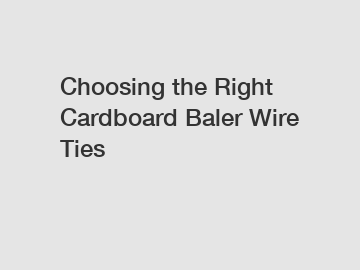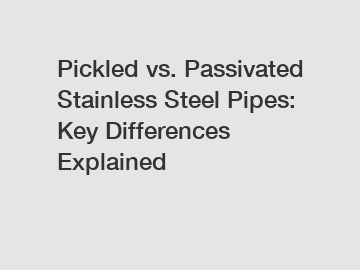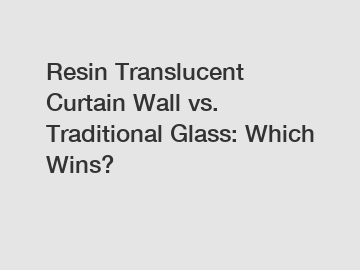What to consider when building a padel court
Jun. 17, 2024
What to consider when building a padel court
If you are thinking about building new padel courts or maybe even a padel club, it is important to make relevant considerations about the project before you start. In this article, we will guide you step by step through what you should consider if you are planning to build one or more padel courts.
First, we'll look at how much it costs to build a padel court and we'll go through the most important aspects to consider when setting a budget for your construction project. Next, we emphasize the importance of building permits, and we look at essential aspects of padel courts such as space requirements, ceiling height and court lighting. Finally, we discuss the maintenance of paddle tennis courts, as well as an underestimated but nonetheless extremely important area: considerations on the best booking software for your padel courts.
What does it cost to build a padel court?
The price of a padel court varies a lot, but an estimate is around &#;20-25,000. The cost of building new padel courts depends on whether you're building from scratch, whether it's indoors or outdoors, and whether you have special requirements for facilities around the court. You can dive deeper into the prices of the individual components of a padel court in this post, where we look at the costs of a padel court.
1) Budget for the construction of a padel court
From the very beginning, it's responsible to draw up a budget for your padel courts so that you have a financial framework for the project. A budget helps to give you an overview of the construction costs, so you avoid unpleasant surprises in the later stages of the project.
When creating a budget for building padel courts, you can consider the following questions, among others:
- What capital do I have available?
- What are the costs of the individual parts of the project, including the foundations, the components of the court, skilled labor and equipment rental for the necessary equipment?
- Is there room for contingencies? And what pitfalls could these pose?
- Financing: when does the investment need to be recouped?
The budget can be included as part of an overall business plan.
2) Building permits
If you haven't obtained the necessary building permits, this can be a show-stopper for the project. The construction of the padel courts can be delayed or completely rejected if the permits and any changes to the area's local plan are not in order. In other words, taking care of the above is an essential part of the preparation before you start building the padel tennis courts.
In addition to having the building permits and licences in place, you should also consider the distance to the neighbors when building padel courts. A good relationship with the neighbors is clearly desirable so that you, the users of the court and the neighbors do not experience inconveniences such as noise from the courts.
How much space do you need for a padel court?
A standard padel court is 20 meters long and 10 meters wide. There should be at least half a meter more on all sides and preferably even more to improve the playing experience.
If you are building singles courts for padel, you can make do with a court that is 20 meters long and 6 meters wide plus the additional half meter on all sides.
Choosing the right location of the court
When building outdoor padel courts, it is advisable to consider where the wind comes from and how the sun's rays fall during the day. It makes a difference whether the court is positioned south/north (recommended) or east/west. Wind and weather greatly affect outdoor padel, so if you are able to locate the court sheltered from the wind, this is a great advantage.
Avoid water on the court with a good drainage
Implementing an effective drain in the court is also worth considering. After a heavy rainfall, water can be left on the surface of the court surface and if the water is not drained away, the artificial grass turf is unplayable.
Finally, surrounding trees can also be taken into account when choosing the best location to build a padel court. Avoid building the court right next to trees, where fallen leaves and branches risk making the court slippery.
Installing padel courts in multi-purpose venues
If you are building padel courts in an existing center, which may already house other sports, you should also consider how the padel courts interact with the venus's other activities.
And of course, it is also worth looking at whether it is easy to get a parking space and get to and from the courts by public transport.
3) Installing padel courts
When building padel courts, it's always a good idea to work with specialists who have done it before. In addition to the players on your local market, there are specialized teams in e.g. Spain that do nothing else but build padel courts. Regardless of who is in charge of installing your padel courts, you should be planning tasks such as renting a scaffolding and a lift with the suppliers in advance so that no time is wasted waiting for one of these items when the work team is ready.
How high should a padel court ceiling be?
If you're building indoors or with a cover, it's important to build to the right height - otherwise you risk players preferring other padel tennis centers with sufficiently high ceilings. It is simply essential that the padel court has the right ceiling height so that players can make a proper lob.
The ceiling of a padel court should be at least 6 meters high, but building higher is recommended. A height of 9-12 meters is preferable as it significantly improves the playing experience. If there are two courts next to each other and one has 6 meters to the ceiling and the other 12 meters to the ceiling, you will always choose the court with 12 meters to the ceiling because you can use the lob much more efficiently.
Beware of the acoustics on your courts
If you are building a covered padel court, we recommend that you consider possible noise and echoes on the courts. If the court is fully covered and the sounds from players and equipment cannot escape, it can resound in the hall and the acoustics can become problematic.
Padel court lighting
The right lighting conditions on and around the padel court are of great importance. Players should not feel that they have floodlights shining on their eyes and are blinded when looking upwards. On the other hand, it should also not be so dark that the ball disappears from your view.
4) Facilities around the courts
In addition to the padel courts themselves, there are various options to enhance the overall experience for the players. If you want to attract the best players, or are thinking of organizing padel tournaments, factors such as audience seating and sufficient space for players to run outside the court to return a smash are key considerations to take into account.
Likewise, the environment around the padel courts is important. A café or lounge area by the courts where people can buy food and drinks can help to create an atmosphere and encourage people to stay longer in the center.
For players, changing and shower facilities are also always nice to have. If you get straight into your car with sweaty clothes after your padel match and drive home, you risk getting cold. Here, good changing rooms and bathing facilities are an essential service for your users, as they contribute to both the sanitation and the social aspect of the paddle sport.
5) Maintenance of padel courts
Once your courts are completed, you should expect regular maintenance work to be carried out on them. This is partly to maintain a good playing experience for users and partly to optimize the lifespan of the courts.
Wiping glass walls and cleaning artificial turfs
Important maintenance tasks for a padel court include regular wiping of the glass walls and sweeping of the artificial turf of the court surface. If the glass is greasy, it is not inviting to players, and the bounce of the ball can also change if the surface is not uniform.
Both the glass walls and the court surface should also be given an annual health check to prevent major damage.
fortune supply professional and honest service.
Recommended article:How to Choose the Right Color Coated Aluminum Coil?
Heavy Duty- Tube and Pipe Clamps
How Does a Flexible Solar Panel Function?
erw vs seamless pipe cost
Advantages and Disadvantages of Fire Blankets
The Advantages of Choosing a Stainless Steel Pipe Fitting
How to Choose the Right Plastic Ground Cover Mat?
It is of great importance for the performance of the surface that the sand is properly and evenly distributed. Otherwise, you run the risk of the ball bouncing unevenly on the artificial turf. In addition, you should also periodically check that there are no sharp objects such as screws or bolts protruding from glass walls or the surface.
The height of the padel court net
The net of a standard padel court is 10 meters long, and 0.88 meters high in the middle and 0.92 meters at the sides. When maintaining your padel tennis courts, you should also make sure that the nets on your courts are always the correct height and that they have the optimal tension.
6) Court booking software for padel clubs
This is a point that can be easily underestimated but is of vital importance. To choose the best booking system for your padel courts. When your new, state-of-the-art courts are ready and waiting to be put into use, it's crucial that it's easy and user-friendly for people to book them. Whether the courts are intended for use in a commercial padel center or in a padel club, managing bookings and users is an absolute key point. Choosing the best system for managing padel courts can generate increased revenue, less administration and, most importantly, satisfied users.
Today, there are a number of digital booking systems for padel, each with different strengths and weaknesses. In the following, we have recommended our considerations when choosing a digital membership system for your padel center.
What should a padel club management software include?
The best online booking systems support the operations and revenue from your courts. It should be easy to book courts, and the user should immediately after a booking receive a booking confirmation with a password to the center and info about the conditions for cancellation. Learn more about what it costs to book a padel court in this article.
Besides court booking, there are other important areas in the administration and management of your paddle courts. Below we have compiled a brief overview of the most important considerations when choosing a booking platform for padel:
Website for your padel center
Your padel center's website is in many cases the user's first impression of your club. The website should be appealing and visitors should be able to quickly find the information they are looking for.
Signing up for coaching lessons
If you offer practice sessions to your users, it should be possible to see an overview of the available training classes and what level they are aimed at. If the user can sign up and pay at the same time directly on the website, it will reduce the administration considerably. Similarly, it will be a huge advantage for the club's coaches if they can see who has signed up for the individual classes, so they can plan the lessons well in advance.
Drop Ins and social activities
Organizing come-and-play activities such as Drop In and Americano is also worth choosing a management system that can handle. Although these types of events are typically free in padel clubs, it's nice for the organizers to keep track of registrations so that the number of participants matches the number of courts. A platform developed specifically for padel might even have a waiting list feature, where the next person on the waiting list automatically takes over the spot in case someone who has already signed up cancels.
Memberships and subscriptions
If you offer memberships or subscriptions for your padel club, it is important that the chosen management software supports the types of memberships you want. Here it is important to consider, among other things, whether the system supports:
- Types of memberships: Senior, junior, passive, families and guests
- Automatic renewal of memberships and payments
- Duration: Annual, quarterly, monthly, weekly
- Booking rights: Number of active bookings, booking ahead, refund in case of cancellation, etc.
Joining and leaving members
In this area, a lot of time can be saved on administration if members can sign up and leave the club themselves, without you having to do it for them. Therefore, it can make sense to go for a membership management software where the user creates a profile and buys a subscription (or just books their court if it is purely pay'n'play). Similarly, it will reduce time spent on membership management if the person can cancel his or her membership and stop the membership fee payment without having to correspond with the padel club. This kind of self-service among users fits in well with the current trend of efficient workflows and quick execution.
Communication with members and guests
In today's fragmented media landscape, people are used to seeking information on different channels. The same is most likely true for your padel center; Some users look for information on your club's website, some read your newsletters via , others visit your Facebook page or other social media, while still others seek personal contact with staff and volunteers at the padel courts. Having a club management system that supports smooth communications with both members and guests will save you a lot of time, so consider in advance how the communication around your padel courts should take place. It's an investment that will be well worth it.
How big is a Padel court?
Choosing play on artificial grass or with wall is optional, the dimensions of the game area no. The proliferation of paddle courts in clubs and public spaces has doubled in the last decade. However, thanks to the standardization of the measures of the paddle tracks, wherever you choose to play, the proportions will always be the same.
Although sometimes you have blamed the state of the surface or the height of the network, the measures collected by the International Paddle Federation Zanjan any controversy related to the dimensions of the track. 10x20 meters of competition, passion and effort.
Padel track measurements
The paddle track includes the concrete, cement, grass or any other material limited by the wall and the fence.
The rectangular play area is divided by a network, located right in the center. In total, the rectangle measures 10 meters wide by 20 meters long with a tolerance of 0.5%. In these 200 square meters they divide the space:
- Service line: It is the line that delimits the legal area of &#;&#;serve and that which the player can never reopen with his paddle shoes during the service. Parallel to the network, they serp 6.95 meters. The length of this service line is 10 meters, coinciding with the width of the track, hence delimiting directly with the wall.
- Central serve line: It is the line perpendicular to the network and the service line. With this line, two symmetrical areas that indicate the couple's play areas are achieved.
The network of a paddle track
The network is the central element of the track and has a length of 10 meters. The height of the network is slightly modified at its ends. While in the center the height is 0.88 meters with a margin of variation of 0.005 meters, at the ends it can reach up to 0.92 meters with the same tolerance of ± 5.
The network hangs from a two -post -anchored voltage device. Both posts, fixed at the ends of the network, cannot hinder the game area.
Height of enclosures
The minimum height free of obstacles is 6 meters, although the Spanish paddle federation recommends that the minimum free height be less than 8 meters.
Also, in the enclosures it differs between two heights according to the material used. At the bottom of the track, the wall or glass reaches a height of 3 meters and its prolongation of a metal mesh one more. In total 3 meters high that near the top of the entire track.
Access to paddle tennis
The FEP also records the dimensions of the access to track. In this case, two situations can be differentiated. Or that access is a full door without division or that the entrance is divided to the network.
In the case of having a single side access, the minimum free hole is 1.05 x 2 meters. In the second case, with a division of access, each free hole must have at least 0.72 meters wide by 2 meters high.
Lighting system measures
Such is its importance that artificial lighting allows to prolong the parties that exceed beyond the hours of natural light. In addition, it is necessary in those places where Indoor paddle is practiced.
Regarding this section, the FEP sets the minimum height of the projectors in 6 meters. Likewise, the lighting columns must be placed outside the track, avoiding security areas attached to the pitch.
Contact us to discuss your requirements of padel court size in meters. Our experienced sales team can help you identify the options that best suit your needs.
10 Questions You Should Know About Eco-Friendly Home Renovations
How Do Smart Home Devices Enhance Everyday Living?
question about homemade stamp die for sheet metal
Key Questions to Consider When Purchasing 12-inch Stainless Steel Straws
Illuminate Your Space with Translucent Board Lampshade
How Do Stainless Steel Appliances Enhance Kitchens?
ODIN Aluminum Sheet Fabrication vs Traditional Techniques: Which is Superior?
198
0
0
Next: The Purpose of Matting
Related Articles










Comments
All Comments (0)